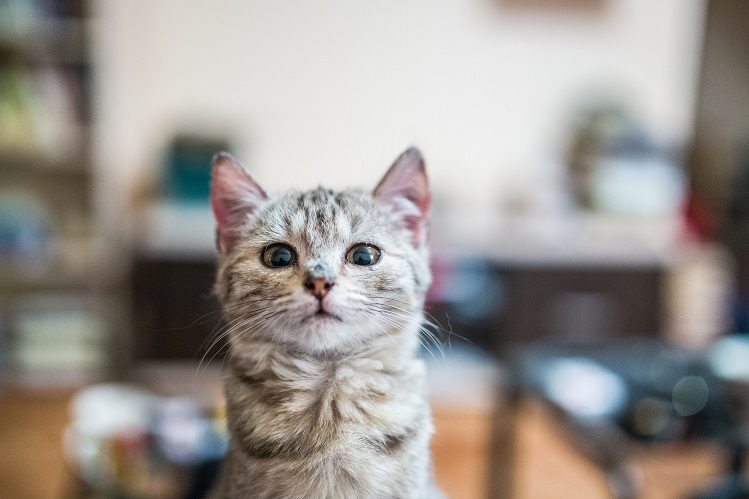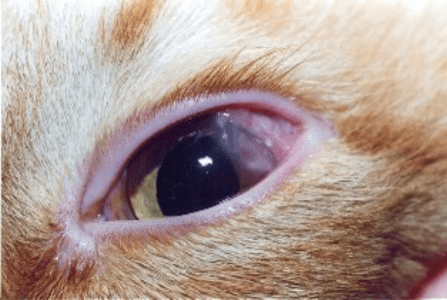
7 nqe lus nug nrov txog kev yug miv
Maria Tselenko, kws kho mob, kws kho tsiaj, kws kho mob tshwj xeeb hauv kev kho tus cwj pwm ntawm miv thiab dev, qhia.
txheem
- How to prepare a cat for the appearance of a baby in the house?
- Cov miv twg tau kawm zoo tshaj plaws?
- Cov miv twg tsis tuaj yeem qhia cov lus txib?
- Yuav ua li cas qhia cov lus txib rau tus miv laus?
- What should be the name for the cat to respond to it? Are specific letters important to cats?
- Tus miv puas yuav teb yog tias muab lub npe tshiab?
- Lub hnub nyoog twg tus menyuam miv teb rau nws lub npe?
How to prepare a cat for the appearance of a baby in the house?
First, you should think about how the situation in the apartment will change when the baby appears. How might this affect the pet? Think about organizing an additional resting place for the cat, at different levels. Quiet resting places are needed, as there may be some noise from the child. The cat should be able to jump higher, to a safe place where she will not be disturbed and from where she can monitor the situation in the house.
It is important to introduce in advance the mode, arrangement of things and order in the apartment, which will be established after the appearance of the child in the house. If a rearrangement is planned that will affect the cat’s usual resting places, you need to carry it out in advance.

Cov miv twg tau kawm zoo tshaj plaws?
This is not to say that certain breeds of cats remember something better than others. It’s just that some breeds are easier to train because they are more active and more inquisitive.
Cats of some breeds – for example, British, Persian – are calmer and get tired faster. And with active cats, you can make the session longer and have time to learn a little more. Active breeds include, for example, Bengal, Abyssinian and Oriental.
Cov miv twg tsis tuaj yeem qhia cov lus txib?
Commands can be taught to any cat. Every cat’s nervous system is capable of creating new connections, connections between actions and their consequences. It’s just that with some cats the learning rate will be faster, with others it will be slower. But it doesn’t happen that a cat doesn’t learn anything at all.
With calm cats, progress will be slower. They enjoy lounging on the couch much more than exercising. It can also be difficult with timid cats. It all depends on the owner’s ability to break the learning process into small steps.
Yuav ua li cas qhia cov lus txib rau tus miv laus?
Kittens learn a little faster than adult cats. The rest of the training is exactly the same. When a pet is already an adult, its brain takes a little longer to form new connections – the same thing happens with people. Therefore, the process is slower.
When teaching commands, we first teach the cat to perform the desired action. For example, we want to teach a cat to sit on its hind legs. We have a cat sitting in front of us waiting for a bite. We bring a piece to the spout and begin to slowly pull it up. At first, we do not say words because we need to teach the cat to perform an action. The cat tears off its front paws, reaching for a piece, and sits in a column on its hind legs, we give it a piece. When the cat starts to sit in a column as soon as we start moving our hand up, it means that she understood what action needs to be done. Seeing the gesture, she already begins to rise. Now you can enter the command.
The team can be called whatever the owner wants. For example, we say “Bunny!” and raise your hand up. After a certain number of repetitions, the cat will remember: “As soon as I hear “Bunny”, and the owner’s hand goes up, I know that I need to sit on my hind legs“. She forms a connection:I hear “Bunny” – I need to sit on my hind legs".
As soon as the cat performs the correct action, she is sure to be given a treat.
What should be the name for the cat to respond to it? Are specific letters important to cats?
I’ve heard so many theories about naming from an owner’s point of view, but I don’t know of any scientific evidence for it. Cats always respond to a word that has a positive meaning for them. For example, if we call a cat to feed, the cat comes and gets food. He remembers:When I hear my nickname, I have to run. There will be something cool!".
If we call a cat to put it in a carrier and take it from the dacha to the city, the cat quickly remembers that it is not necessary to go to his nickname. Because you will be caught and put in a carrier.
It is not specific sounds that are important, but how and with what meaning you give a nickname. How you can create a connection between the name and what it means to the animal.

Tus miv puas yuav teb yog tias muab lub npe tshiab?
The cat will respond to any name if it is taught. For example, we take a treat, come up with a new name for the cat, say “Murzik” and drop a piece of treat next to us. The cat eats a treat, we move in the other direction, again we say “Murzik”. Or, if it’s pate, we show him what we have – and the cat comes up and eats it. We move away from him for a couple of steps, pronounce and show again. The message is this: you hear a new word (name), you come up – it means there will be a yummy.
If you pronounce a new name randomly, the cat will not learn to respond to it. He will lack incentive. And cats do not always respond to the old name.
Lub hnub nyoog twg tus menyuam miv teb rau nws lub npe?
From the age at which he is taught. This usually happens when kittens appear with new owners, that is, at 2-3 months. At this age, kittens are more than ready to learn and can be easily trained to respond to a name.
In general, training elements can be introduced as early as the fifth week of life. Gently accustom to the reward marker, to simple things, actions. But at this age, a kitten still needs to be with its mother and other kittens in order to learn important social skills.





